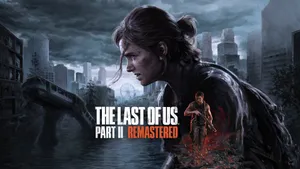
The Last of Us 2
completed
Year released: 2020
The Last of Us Part II is undoubtedly a technically outstanding project, yet it evokes mixed feelings, particularly regarding the balance between gameplay mechanics and narrative structure. From a gameplay perspective, the game left me with an overwhelmingly positive impression. The developers succeeded in creating a deep and varied system of interaction with the environment and enemies. I particularly want to highlight the detailed tactical possibilities: the ability to use low cover, crawl under obstacles like trucks, or flexibly plan actions for stealth sequences or direct confrontations – all this demonstrates a high level of game design thought and provides the player with a wide scope for tactical experimentation. The game's visual component is executed at a superb level. Playing on the Steam Deck, I was pleasantly surprised by the quality of optimization for this device. Despite the project's scale and graphical detail, the game exhibits stable performance with a minimal number of freezes, which is rare for portable hardware and speaks to quality technical work. Visually, the game looks good even on the Steam Deck. However, the aspects concerning character development and the plotline felt, frankly, unnecessarily bloated and raised certain questions for me. The game touches upon the rather well-worn theme of the senselessness of revenge, which could potentially have been explored much more convincingly. As a result, the execution of this theme feels somewhat muddled. Character motivations and shifts in stance are often presented without sufficient justification or appear rushed, which hinders empathy and understanding of their actions. Furthermore, attempts to provide the player with moral "choices" ultimately have no significant impact on the plot's progression, undermining the sense of agency and making these moments feel formal. There is also a general sense of the narrative and gameplay sections being overly drawn out, particularly in the middle part of the game. The peak of this feeling occurred approximately upon reaching the island of the Seraphites. In conclusion, The Last of Us Part II undoubtedly deserves attention due to its outstanding gameplay foundation and magnificent technical execution. However, despite its ambition, the game's narrative part and character development raise questions and, in my opinion, do not reach the same level of perfection as the gameplay mechanics. The game should primarily be recommended to those who value deep and varied gameplay, rather than solely for the sake of the story.

Baldur's Gate 3
completed
Year released: 2023
In my childhood, I played a lot of classic RPGs — the Fallout series, Neverwinter Nights, Arcanum, Planescape: Torment, and other genre masterpieces. That’s why I was particularly interested in what Larian Studios, the creators of Divinity: Original Sin, would come up with for the continuation of the legendary series. I really liked the game, although I played it during a period when time was tight (and even now, there’s not much of it 😵💫😅). I recommend starting it when you’re not too busy with other things — this will allow you to fully immerse yourself. And if possible, play with someone close: a joint adventure with a loved one will make the experience even brighter and more emotional. Immersion in the World: A Full-Fledged Universe Baldur’s Gate 3 is not just a game, but a living, breathing world full of interesting characters and captivating adventures. Larian Studios have created a space where every decision affects the environment: you can explore hidden corners, interact with NPCs, and shape the story through choices. This is especially noticeable in the plot, which branches depending on your actions and decisions for your companions. For regular players, this means hours of engaging exploration, and for industry veterans — an example of masterful narrative where nonlinearity doesn’t feel artificial but organically weaves into the gameplay. Gameplay: Choices and Build-Crafting The process of creating builds here is a real pleasure for fans of classic RPGs. You can experiment with classes, abilities, and tactics, adding depth and replayability. The battles are tactical, requiring strategy, yet accessible. I’ve seen criticism from hardcore fans of the series and classic RPGs — saying Larian simplified some aspects. You can partially agree with that, but let’s admit: the classic RPG genre isn’t as popular nowadays, and the studio adapted it for a wider audience without losing the essence. In the end, they did everything right — the game balances depth and accessibility, making it appealing to both newcomers and gaming industry experts who value innovations in design. Atmosphere and Characters: Emotions and Engagement The characters here are alive and multifaceted, with deep backstories and dialogues that react to your choices. The atmosphere of Forgotten Realms is conveyed perfectly: from gloomy dungeons to epic quests. This creates a sense of a real adventure where every step can change the outcome — ideal for those seeking emotional immersion. Conclusion: Recommendation with a Caveat Overall, Baldur’s Gate 3 is an outstanding example of a modern RPG that respects the genre’s roots but makes it relevant. Definitely give it a try if you love deep stories and tactical gameplay. I myself plan to return when I have more time and the mood for full immersion in this world again.
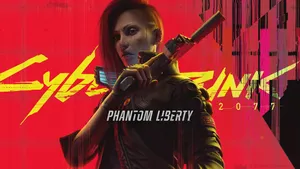
Cyberpunk 2077 + Phantom Liberty
completed
Year released: 2020
I first played the original Cyberpunk 2077 almost at launch, back when the game was a real battlefield of bugs and disappointments. Since then, the developers from CD Projekt Red have seriously worked on updates, and I decided to return to evaluate the changes. In the end, it’s a solid action-RPG in a futuristic setting, but without any revolutionary breakthrough. It doesn’t evoke a storm of emotions, remaining at the level of a “good, but ordinary” game. It’s especially disappointing, considering that cyberpunk is my favorite genre. Gameplay and Technical Side: From Catastrophe to Improvements At the start, the launch version was a real nightmare: terrible optimization, raw gameplay, and a bunch of underdeveloped systems. The progression system seemed weak and uninteresting, and elements like the logic of police chases were simply absent. The world of Night City felt empty, without depth in interactions. However, after all the patches and updates, the picture has changed for the better. Now the progression is more complex and interesting — it integrates better into the gameplay, allowing experimentation with builds and tactics. Combat has become more dynamic, and the city feels more alive. Nevertheless, the choice system remains quite compressed, as in most action-RPGs. Compared to classic role-playing masterpieces like Baldur’s Gate 3, where decisions branch endlessly, everything here is simpler and more predictable. Despite the improvements, what saves the game above all is the atmosphere: neon lights, stylish design, and a soundtrack that perfectly conveys the cyberpunk vibe. Without this, it risked sinking into mediocrity. Plot and Characters: Interesting, but Not Ideal I completed the game even in its initial, “raw” state, and it didn’t leave strong emotions — just a pleasant adventure without a wow-effect. The overall tone is dark and cynical, which fits the genre, but it doesn’t always touch the soul. DLC Phantom Liberty: Disappointment in Dogtown I also played the DLC Phantom Liberty, which many praise as the best thing that happened to the game. Alas, I liked it less. The new location — Dogtown — seemed boring and monotonous, without the spark that the main Night City has. The characters here are bland, lacking charisma, and the story with its resolution came out obvious and primitive. Everything is too straightforward, without depth or surprises. The plus is that the new ending from the DLC harmoniously fits into the tone of the original — it maintains the same melancholy and hopelessness. If you’re a fan of the lore, this might hook you, but for me, the DLC didn’t live up to the hype. Conclusion: Hopes for the Future Overall, Cyberpunk 2077 after the updates is a solid game worth trying for its atmosphere, style, and music. But CD Projekt Red advertised it too aggressively as a revolution in the industry, promising to change everything. In reality, we got an ordinary title where the potential isn’t fully realized — more systems, depth, and innovations could have been added. Personally, I’m disappointed in the project: as a cyberpunk fan, I was waiting for a masterpiece but got “what we have is what we have.” Nevertheless, I’ll look forward to the sequel with interest and wish the team to implement all their planned ideas. The main thing is to approach marketing more cautiously to avoid repeating mistakes. If you haven’t played yet, start with the updated version — it’s worth your time, especially if you love neon and hacker adventures.
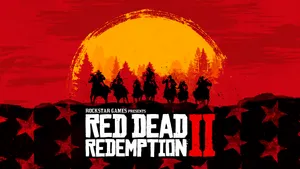
Red Dead Redemption 2
completed
Year released: 2018
For me, Red Dead Redemption 2 is one of the best games of the decade—a true AAA gem where every aspect is polished to perfection: gameplay, story, characters, atmosphere, music, and graphics. Everything here is crafted at the highest level, and it's not just words; you feel it in every detail. I've completed the game twice, and both times it amazed me with its depth across all dimensions. Arthur Morgan doesn't have a radically unique personality, but among the multitude of gaming protagonists, he's one of the most fleshed-out and profound, in my opinion. His evolution, moral dilemmas, and interactions with the world around him make him a living, relatable human being rather than a stereotypical hero. In both playthroughs, I fully immersed myself in the atmosphere of the Wild West—a world where, unlike most games from the last 10+ years, I didn't sense any falseness or rush. What particularly strikes me is the developers' relentless attention to detail—it's a level that borders on obsession. From horse care (feeding, grooming) to the dynamic muscles on its body and countless other elements tied to physics, animation, and simulation—all of this creates the sensation of a living, breathing world. From a game design perspective, these little things aren't just decoration: they enhance immersion, compelling players to invest emotionally and strategically. I'll forever remember Arthur Morgan as a real character with a soul, not some faceless puppet in a video game. I've already played through RDR 2 twice and plan to return to it again when I have time—it's absolutely worth it. Of course, the game can feel slow-paced and sometimes repetitive due to its tempo and routine elements, but if that doesn't deter you, it's a must-play.
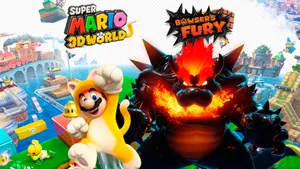
Super Mario 3D World + Bowser's Fury
completed
Year released: 2021
This was my first game that I completed on the Nintendo Switch, and it left me with exclusively positive impressions. At first glance, the project might seem like purely children's entertainment, but its strong side is in its ability to challenge even the most experienced gamers. Thanks to thoughtful game design, the game offers flexibility: those who prefer an easy playthrough without extra complexities can simply enjoy the adventure, while enthusiasts get the opportunity to dive deep into collecting all available items. The plot here is truly secondary — the developers clearly prioritized gameplay, where each level offers unique mechanics and situations, making them genuinely memorable and diverse. Gameplay: Perfect Balance for Everyone The main charm of Super Mario 3D World lies in its accessibility and depth at the same time. Levels are built to provide a basic path for casual players, while hiding numerous secrets and challenges for those seeking a real test. Collecting stars, coins, and other items turns into an engaging process that motivates exploring every corner. This isn't just a platformer — it's a masterclass in design, where creative mechanics (from costumes with superpowers to cooperative mode) make the playthrough fresh and dynamic. DLC Bowser's Fury: A Fresh Take on the Classic I also completed the DLC Bowser's Fury, and it truly hooked me. The shift in camera perspective to a more open, almost open-world style adds new dynamics to the adventure, with the collecting process taking center stage. Exploring locations brings real pleasure — that sense of freedom and joy from discoveries is something I rarely encounter even in modern AAA projects. Battles with the giant Bowser add epicness, and the integration of collecting with the main gameplay makes the DLC compact yet rich in experience. If the original focuses on linear levels, here the emphasis is on free exploration, which perfectly complements the base game. Visuals and Atmosphere: Brightness and Nostalgia The visual style in both the main game and the DLC is simply captivating: bright colors, cute animations, and detailed worlds create an atmosphere of pure fun. I'm definitely coming back to collect all the collectible items in both parts — this process doesn't get boring and only heightens the desire to replay levels. Conclusion: Recommendation for Adventure Lovers Overall, Super Mario 3D World + Bowser's Fury is an excellent example of how developers can create timeless classics that delight both newcomers and hardcore fans. The game doesn't chase a complex plot but wins through flawless gameplay, variety, and visual charm. If you're a Switch owner and haven't tried it yet, this is a must-play — especially for those who appreciate platformers with exploration elements. I'm thrilled and eagerly await the chance to return for the remaining trophies.

Bayonetta
completed
Year released: 2009
This is one of my favorite and most replayable games — I've completed it about 10 times and return to it with pleasure every time. As a fan of the Devil May Cry (DMC) series, I highly appreciate how Bayonetta, as a slasher, achieves a similar level of engaging gameplay. Of course, in many aspects it's simpler than DMC, but it surpasses it in visual effects and dynamism, creating truly spectacular battles. The levels aren't always diverse, but this is more than compensated by the outstanding combat system. Add to that the charismatic characters, especially Bayonetta herself, who spices everything up with humor and appears as an incredibly beautiful and charming heroine. Gameplay: Dynamics and Spectacle The combat system is the heart of Bayonetta, and it's top-notch here. The game offers combos that you can hone endlessly, similar to DMC: experiment with moves to create more beautiful and powerful attack sequences. Unlike DMC, where effective fights require experience, in Bayonetta even beginners just mashing buttons randomly will get spectacular battles — everything looks stylish and epic. This makes the game accessible yet deep for veterans. The levels, though not always varied, are built around dynamic skirmishes where visual effects (explosions, slow-motion, magical transformations) take center stage. Bayonetta often outshines DMC precisely in this spectacle, making every fight feel like a high-budget action movie. Characters and Atmosphere: Charisma and Humor Bayonetta as a character is a masterpiece: beautiful, charismatic, and full of sarcasm. Her jokes and demeanor add lightness, turning serious battles into an entertaining show. The other characters also contribute to the atmosphere, but the main heroine is the real star that makes the game memorable. Replayability: Secrets and Mastery The game is incredibly replayable: on the first playthrough, you won't unlock all the accessories, weapons, and secrets, which motivates you to come back. Just like in DMC, here you can polish your skills, perfect combos, and aim for ideal runs. This isn't just repeated playthroughs — it's an opportunity to grow as a player and enjoy the process. Conclusion: Recommendation for Action Fans Overall, Bayonetta is a must-play for everyone who loves slashers, and even for fans of action-RPGs. Unlike many modern action-RPGs, where progression often feels useless and fights are boring and monotonous, here every element works toward dynamics and spectacle. No boredom — just pure adrenaline. If you're a DMC fan or simply looking for action with soul, give it a try: the game is easier to master but doesn't lag behind in depth and style.

Bayonetta 2
completed
Year released: 2014
This was the second game I completed on the Nintendo Switch, and it became a real step forward compared to the first part. Here, the developers took everything that was good from the original Bayonetta and improved it in almost every aspect: bosses became even more spectacular, locations — noticeably more interesting and diverse, and new types of weapons add freshness to their use. In the end, this is an evolution of the first game, a refined version that feels like a must-have for fans of the genre. I recommend it to everyone who loves great action and slashers, and especially to fans of Bayonetta 1 and the Devil May Cry (DMC) series.
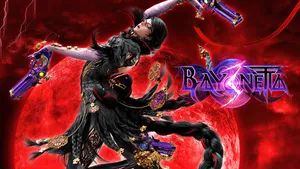
Bayonetta 3
completed
Year released: 2022
I've finished playing Bayonetta 3, the latest installment in this epic series. Just like the previous games, it completely captivated me, though initially, the demon summoning mechanic raised some mild concerns—it seemed like the fights as Bayonetta might take a backseat. Fortunately, that didn't happen; in reality, it's a fantastic addition that brings fresh variety and spawns a ton of new, truly epic situations in the gameplay. As someone who knows games well and sometimes thinks like a game designer, I see this as a smart move: the demons don't steal the show but enhance it, allowing you to combine attacks into even more spectacular combos. The changes to the weapon equipping system are also worth noting. In the first two parts, you could separately equip weapons to hands and feet, creating hybrid sets. Now, the choice is between two full loadouts—one for hands and feet or another, with quick switching between them. Personally, I prefer the old approach from Bayonetta 1 and 2; it gave more room for experimentation. But the new variant isn't worse: it simplifies balance and fits better into modern slashers, where the emphasis is on dynamics and quick decisions. In the end, it's not a downside but an evolution that makes the game more accessible without sacrificing depth. Overall, Bayonetta 3 is pure madness in the best sense of the word. Every level bombards you with new mechanics, and many of them stun with their visual flair. Take, for example, controlling a train that turns into a wind-up toy, or transforming into the train itself—these moments shatter expectations and add chaos. In short, the levels are incredibly diverse in terms of gameplay mechanics: they don't delve deeply into every idea, which can make the game feel a bit drawn out at times. But that's not an issue—the mechanics are so fun and cool that they keep you engaged, making you smile at the absurdity and creativity. From a design perspective, it's a masterclass in preventing player boredom by introducing fresh elements without overwhelming the experience. The new playable character, Viola, is another bright highlight. Her slasher mechanics are fresh, and she's fun in her own right, perfectly diluting the sections with Bayonetta and adding variety to the game's rhythm. As a result, Bayonetta 3 comes out much more dynamic than its predecessors: it generates a bunch of unique situations, doesn't let you get bored, and maintains the high style of the characters. The mechanics, as before, are cool and balanced—not as overloaded as in Devil May Cry, but they constantly encourage experimentation, pushing you to try new combinations and tactics. Out of the entire trilogy, I'd recommend Bayonetta 3 to newcomers and those craving maximum madness in action. It's one of the craziest games I've ever played—a true festival of creativity and adrenaline. I'll definitely return to unlock all the gear and secrets; there's plenty to do even after the credits.
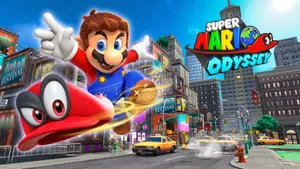
Super Mario Odyssey
in progress
Year released: 2017
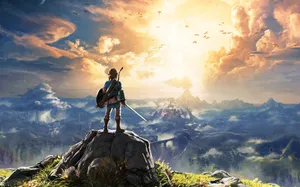
The Legend of Zelda: Breath of the Wild
planned
Year released: 2017
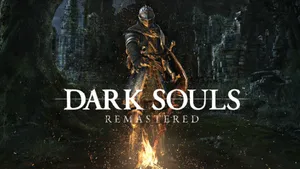
Dark Souls Remastered
planned
Year released: 2018
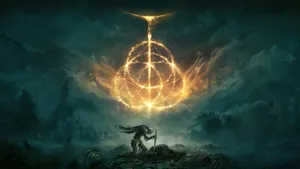
Elden Ring
planned
Year released: 2022
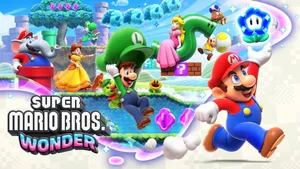
Super Mario Bros. Wonder
planned
Year released: 2023

Devil May Cry 3
planned
Year released: 2005
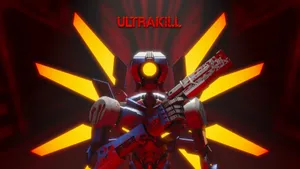
ULTRAKILL
planned
Year released: 2020
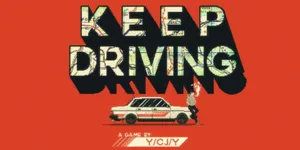
Keep Driving
planned
Year released: 2025
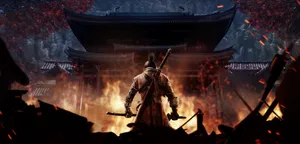
Sekiro: Shadows Die Twice
planned
Year released: 2019
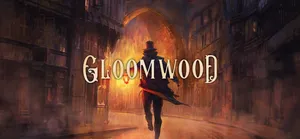
Gloomwood
planned
Year released: 2022
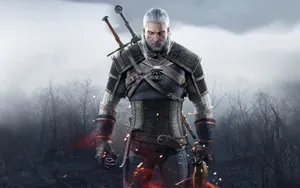
The Witcher 3
completed
Year released: 2015
For me, The Witcher 3 is currently the best game from CD Projekt Red. My assessment is based on my last playthrough, which was about two years ago, and perhaps if I replayed it now, my impressions might shift. That said, considering I've sunk 461 hours into it and can't even remember how many full runs I've done, including the two DLCs—especially "Blood and Wine," which I consider one of the best expansions in gaming history. Typically, DLCs aren't such massive chunks of content, but here, if another company had made something similar, it could easily be sold as a standalone game at full price. As someone deeply versed in games and who sometimes thinks like a game designer, I see this as a brilliant approach: the DLC doesn't just add on; it expands the world, offering a full-fledged story and mechanics on par with the main campaign. Gameplay-wise, the game draws you in deeply, though looking back now, the mechanics don't seem as intricately developed or refined as they felt at the time. Still, even today, I think it'd be fun to replay it—and I probably will before the release of the fourth installment in the series. A great indicator of the game's quality for me is that I initially played through the first and second parts—they were solid—but it was only after The Witcher 3's release that I dove so deeply into the lore, world, and characters that I went on to read all the main Witcher books. So, even if I note that the gameplay mechanics aren't overly complex, the fact that the game inspired me to explore the source material speaks volumes. In the end, I can say that I recommend everyone play The Witcher 3 at least once, and if you enjoy it, go for the first and second parts too—then you might even try reading the books.